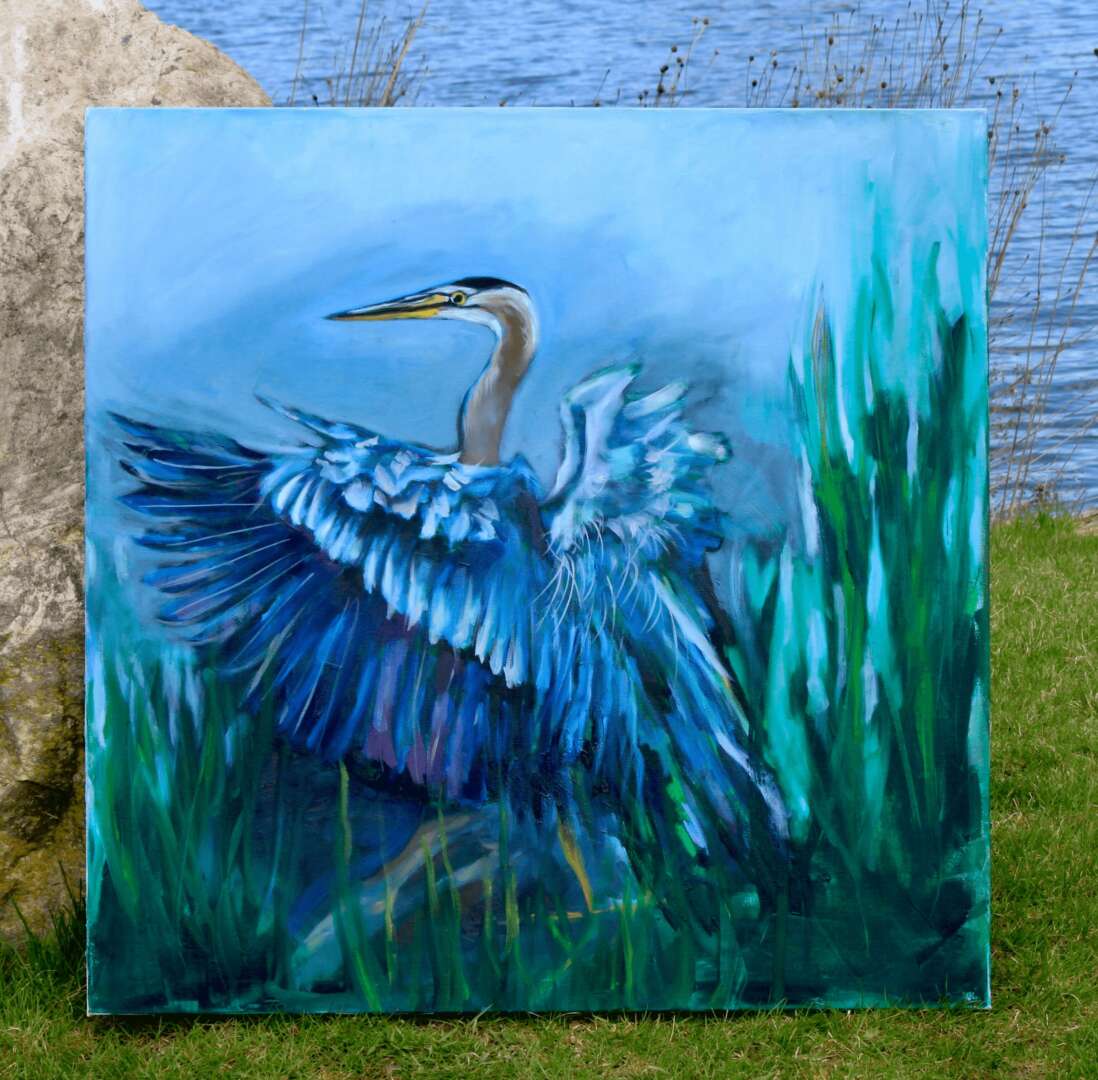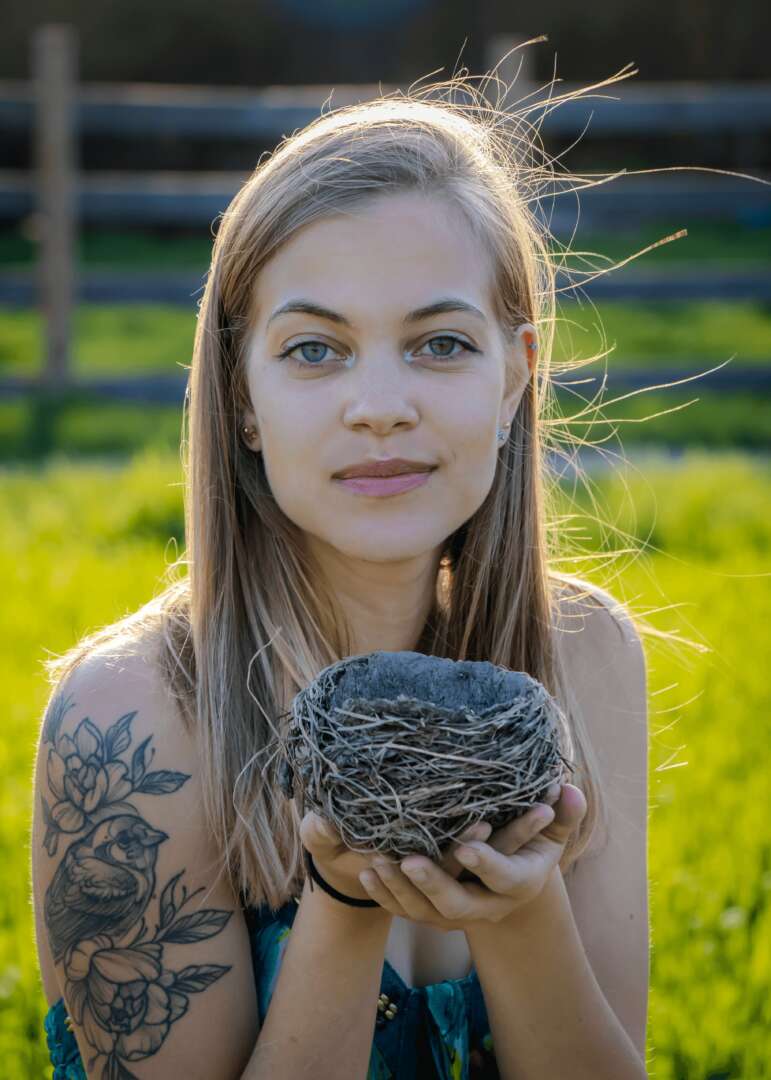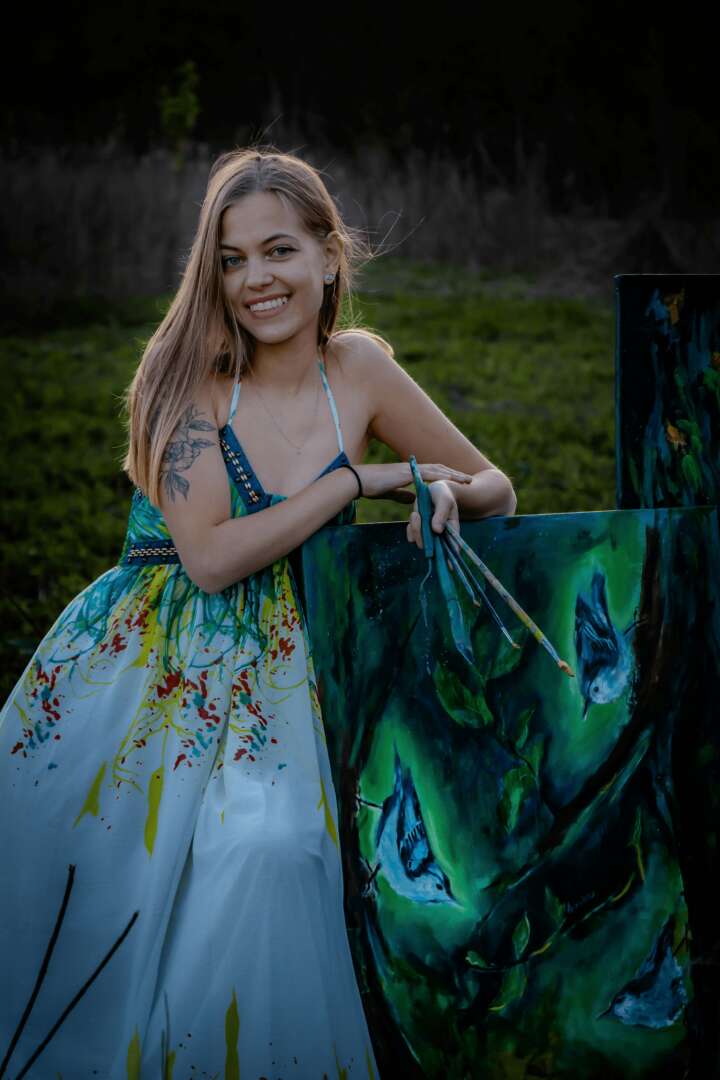We caught up with the brilliant and insightful Maria Ananieva a few weeks ago and have shared our conversation below.
Maria, appreciate you joining us today. Earning a full time living from one’s creative career can be incredibly difficult. Have you been able to do so and if so, can you share some of the key parts of your journey and any important advice or lessons that might help creatives who haven’t been able to yet?
Prior to getting that studio, I had interviewed for a full time marketing position. While I was waiting to hear back and trying to decide between that job and renting an art studio, I went ahead and signed my studio lease. Later on , I heard that I did not get the job – but I had made the decision to move on to my creative side. I was 20 years old when I first moved into my art studio. I had just dropped out of college due to COVID and not wanting to take online painting classes. I had no plan or idea what to do , I just knew I had to paint and I was excited to have a space to do it.
The space was big, compared to the things I had to put in it – a few art supplies and canvases. I started making art right away , just on the floor, no easel or anything. I posted my art on local groups regularly and that’s how I got my first sales and clients! That made me believe it is possible to do art full time. The first year was a learning experience and i said yes to EVERY single opportunity – whether it be teaching classes, kids or adults, painting live at a wedding, participating in art shows and doing exhibits. I think many people spend too much time worrying and preparing and less time doing. Just dive in – the worst thing that can happen is you learn what to do better next time.

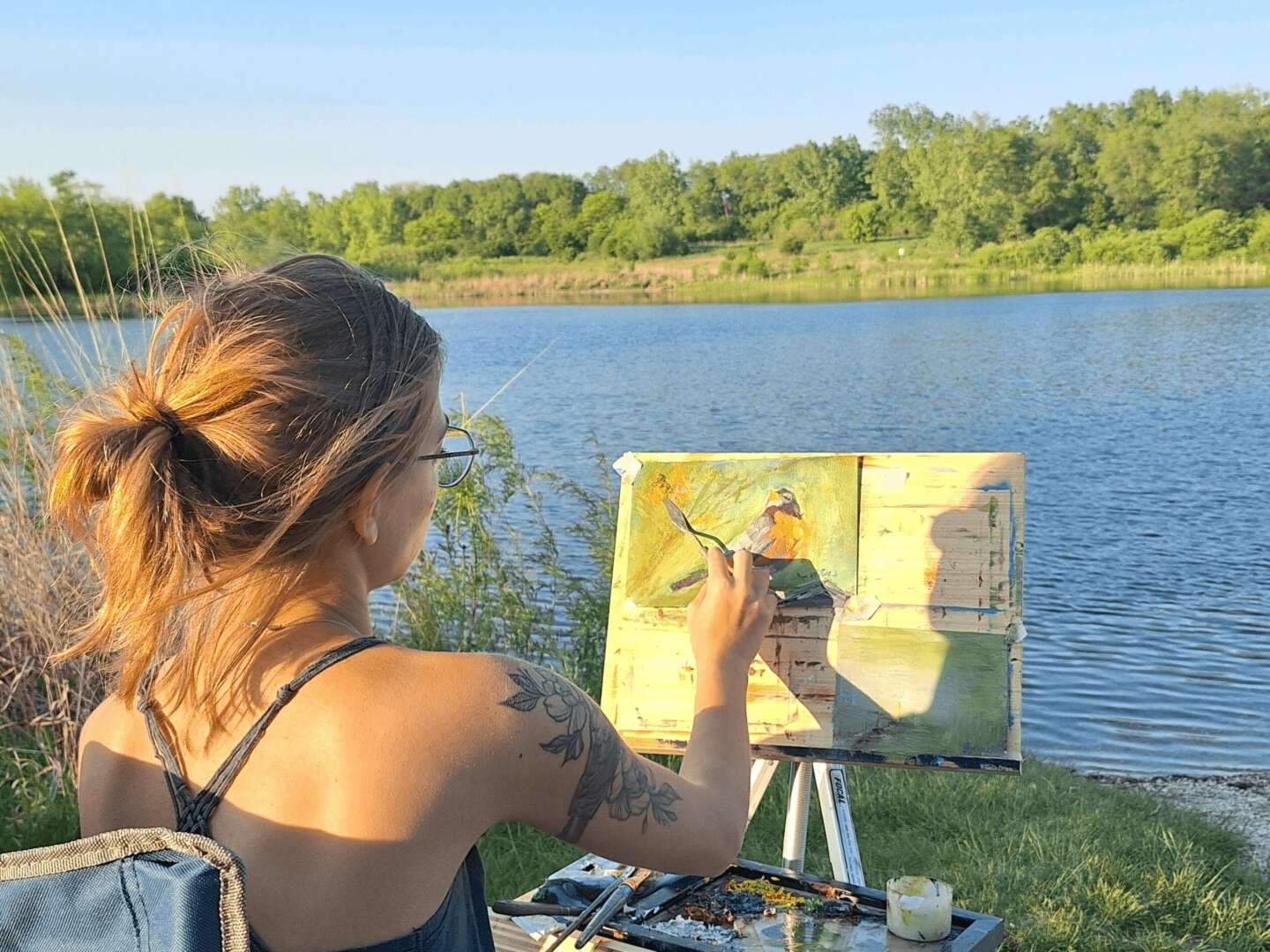
Maria, love having you share your insights with us. Before we ask you more questions, maybe you can take a moment to introduce yourself to our readers who might have missed our earlier conversations?
I am an artist / oil painter that specifically focuses on painting birds. I had always done art, I was a creative kid. When I got the opportunity to rent an art studio space, I ran with it. Besides selling my original work, I also do commissions, fine art prints and seasonal merchandise like coffee mugs, ornaments. I didn’t always have a niche, but I find it that it helps from a marketing perspective. I have learned who my ideal clients are through experience, not just brainstorming.
What I am most proud of is my persistence. Everyone who has their own business, big or small, knows that you need to keep an open mind and keep learning. I connect my work with my experiences as a birdwatcher and how fascinating I find it to learn about their behavior, history and anatomy. Not only did I learn how to talk to people and the importance of it, but also how to find clients and establish genuine connections with them trough my artwork.

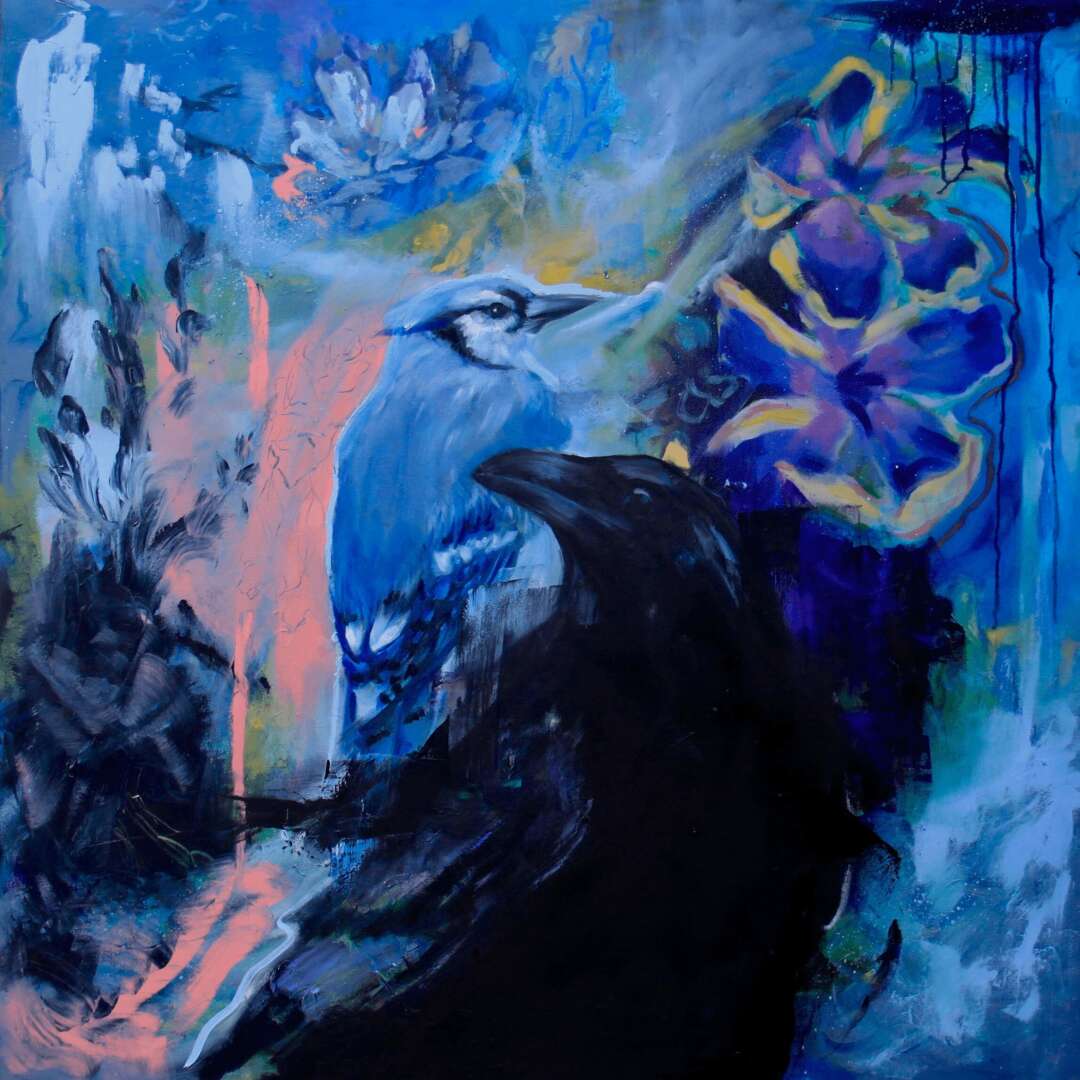
We’d love to hear a story of resilience from your journey.
I lead an artist talk recently about my experience so far in the creative world. One of the questions I was asked , was this: “Have you ever failed?”. More times than you know. As a creative, I tend to be self critical about my work and often also don’t give myself credit for the wins. I have been rejected from shows, I have had commissions canceled, doubts about whether or not this will work (being a full time artist).
However that is also a lesson on its own. You learn how to make a distinction between what’s personal and what’s business. Many people, like myself, are emotionally involved in their business. Sometimes to the point, where they are unable to separate emotion from principle. While both are important to implement in your business idea for success, making the distinction between the two is crucial. If you make a mistake or something negative impacts your business ,you move on and keep going. Sometimes you have to make sacrifices you are resistant to – my best advice is to give yourself a timeline and realistic goals and make a plan for the what if’s. What if by year 3 , I still don’t make full time income from art? Then you find financial stability somewhere else and find a different way to approach selling your art, until it works. What if I am experiencing burnout and don’t want to go back to 9-5? Go back to why you started in the first place; hire help; take a break temporarily. As Billy Joel says “You can afford to lose a day or two”.
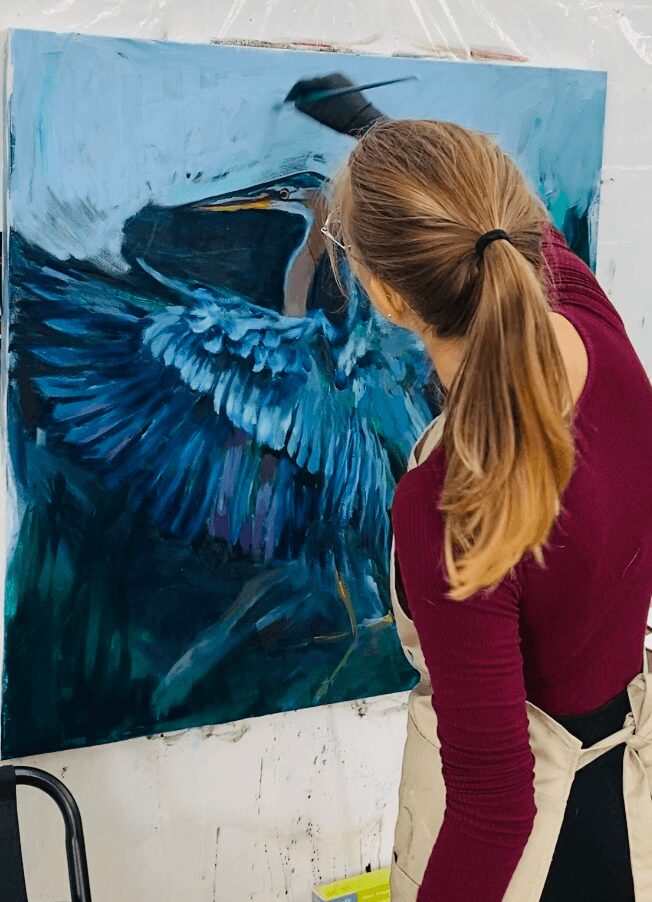

Looking back, are there any resources you wish you knew about earlier in your creative journey?
I wish I knew right off the bat that there were multiple ways to be a full time artist. That might be a given to some, but hearing so many opinions when you first start can be absolutely confusing. Some say “just sell originals, prints cheapen your original art” , others say ” I only make full time art on stickers and merch”, thirds say ” Only sell online” or “only sell in person” . Nowadays with the online world progressing, it can be nerve wracking to know which way to go. If you are anything like me, you would probably enjoy the variety. I sell my art in person, at gallery exhibits, fine art fairs, online and through instagram.
I would explore what each road has to offer, including pros and cons, experiment with it and at the end – have some fun with it. It is a journey and not a destination, after all.
For art fairs, there are multiple websites, like Zapplication ,where you can find good shows. There are Facebook Pages, like Art Fair Reviews, where you can check if the show is worth it.
For gallery exhibits, you can look for Open Calls online, or better yet, find the galleries you like and subscribe to their newsletter. Going to local events is very important for networking and establishing connections.
For online sales, take some courses. I have worked with a coach for Instagram – Natalia Karpman at yes.artmarketing and I have improved the way I approach sales on Instagram.
For your website/etsy or online platform , you need to learn SEO if you want to be discoverable. There is a plugin you can download for free – SEOspace that helps you improve your page. Submit your website to Google Console for google to crawl and index your website.
Use PirateShip for cheaper shipping rates. QR Monkey for creating free QR codes and Canva for easy designs.
As far as making art prints and merchandise, ask yourself if you want to do local vendors or not. I find it easier to work with third party companies when it comes to prints, but I make my own merchandise since it’s only seasonally and I mostly sell those at local shows.
It might seem like a lot of information, but remember all this is acquired over the years through trial and error. What works for me, might not work for you. The important thing is to take things one step at a time! Have fun!
Contact Info:
- Website: https://www.mariaananieva.com/
- Instagram: https://www.instagram.com/ananievaart/
